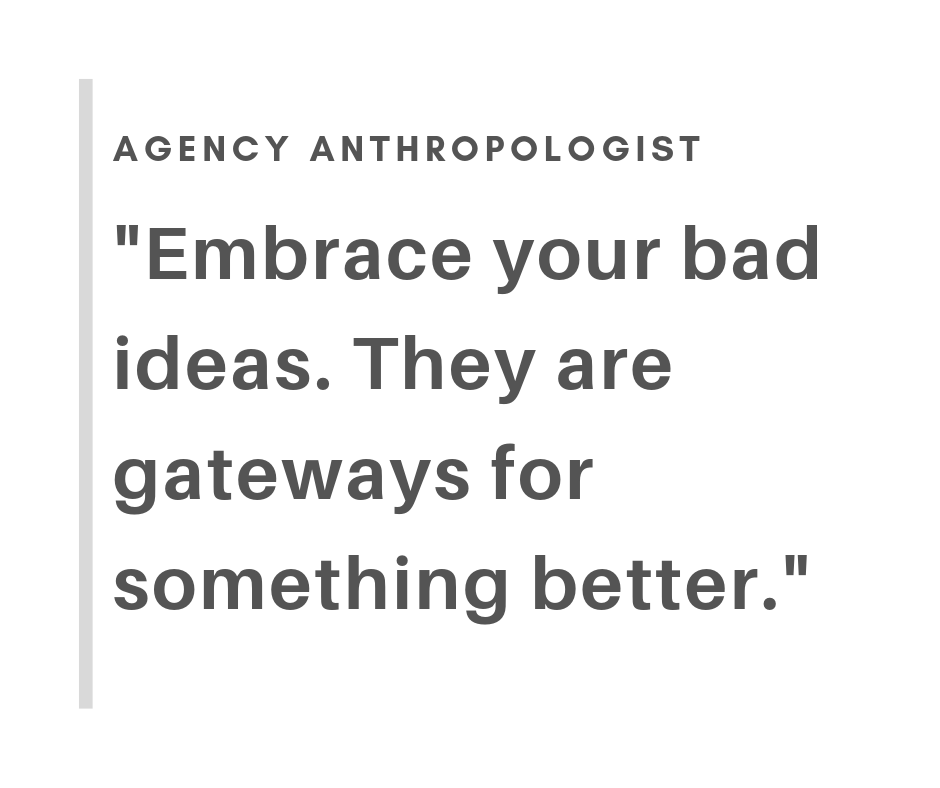
“What do you even do…?”, she asked incredulously. What a way to start a day! When asked by a colleague, albeit a member of a different team, what I do, I fumbled an answer in complete chagrin. I thought it was completely and utterly obvious based on the types of strategies, marketing plans, and reports of various kinds that I’d produced. Shows what I know!
My role and responsibilities were completely opaque to her. More than that, she seemed to believe that what I did held little value for the company. Or, at least that’s what her tone, body language, and follow up questions made me believe. I’m not sure what I did to inspire such ire, but in the end, when faced with questions that query your professional existence, you can let them shake your confidence or alternatively, let them serve as inspiration to solidify your direction.
So, rather than going down a rabbit hole of doubt and insecurity, I have been thinking about some of the attributes of the work we produce and how we (as a marketing team) get there. How do we create business insight and marketing strategy? How do we create hugely successful marketing plans, customized to a client’s business, based on actual data and research?
The Weird World of Insight and Strategy
Why, you ask, is insight and marketing strategy a weird world? Like any creative endeavour, developing marketing strategy can take many forms. Sometimes it’s brainstorming sessions, a cascade of “Post-it™” parties, or a riff-off to find the absolute worst idea (which can often lead to the best idea).
A few years ago a colleague and I (you know who you are!) were working on a campaign for a milk testing device for farmers. Our glorious contribution to the campaign direction was the hashtag: #squat&squirt. Yow. Although we were trying to draw attention to the act of milk sampling, harkening back to the image of a farmer, seated upon a wooden stool, milking a cow into a bucket might not have resonated with contemporary industrial farmers. Suffice it to say we didn’t end up using that hashtag, but we certainly killed ourselves laughing on the way to a better idea.

There are copious numbers of marketing and business articles detailing the value of creating user personas and getting into the mindset of the consumer (i.e. Inc. 2018, Inc. 2017). There is a great deal of value in this. However, what if we turned that practice on its head? Rather than asking questions from the point of view of the consumer, what if we asked questions from the point of view of the product. Stay with me here. Throughout the years we’ve worked with clients from a variety of industries, some more glamorous than others. In a few cases, the businesses in question ran businesses that sold “grudge” products: things that consumers need, but never really want.
How do market something nobody wants? After going the route of consumer personas, we often dove into speculating on the feelings, personality, and attributes of seemingly inanimate objects. What does a chilli pepper feel? How does your furnace communicate? I know this probably sounds odd, and this won’t make it any less odd, but there is a whole branch of contemporary philosophy devoted to speculating on alternative realisms, alternative perspectives on reality (this is especially relevant to emerging AI systems).

While we were not doing any justice to the philosophical considerations of speculative realism. Experimenting with viewpoints is, in my opinion, always a valuable exercise. One of my favourite authors on the subject, Ian Bogost, has written on how some things, namely fleshy humans, come to matter more than the realities of other things, like hot peppers, furnaces, and obsidian flakes. His is the essence of “alien phenomenology”.
Alien phenomenology takes for granted that all beings interact with, perceive, and experience one another.
Alien Phenomenology, or What It’s Like to Be a Thing by Ian Bogost http://bogost.com/books/alien-phenomenology/
Does this sound weird enough? I have one last layer of complexity to add. As marketers we learn a great deal about each business we work with. From the droning details of point-of-sale transactions to how products are assembled and shipped, to the complexities of off-shore and next door manufacturing and logistics. We have to take those details and parse them with two perspectives: worm and hawk.
When we’re assembling a picture of what the business ecosystem looks like, we dig–I always wanted to be an archaeologist. I suppose you could call me a data archaeologist some days. We collect up all the digital data we can about the health and success of a business. This is the worm data. It’s often hidden, has to be uncovered, and is always covered with extraneous bits of inconsistency and conflict between sources; “gremlin” data that just doesn’t make any sense.
Next, we take flight to gather the 100 foot view, like a hawk. This involves becoming avian cartographers and looking at the business landscape. What are the competitors doing? What is the local, regional, or global business sector doing? Where will the sector go? What issues will threaten it? Sounds a lot like a SWOT (Strengths, Weakness, Opportunities, Threats) analysis, doesn’t it? It is, with the exception that we parse, or combine, our hawk data with our worm data until we have a beautiful Bob Ross landscape. Sounds simple, right?

https://i.ytimg.com/vi/VPjLSwac7-w/hqdefault.jpg
Our landscape becomes the basis for developing business insights and marketing strategy. Sometimes the result is lush and others, barren (furnaces are just a tough sell). But, what do we even do, anyway?
When asked “what do you even do?” I wanted to answer, “we sit around, speculating on weird things, like worms, hawks, and chilli peppers…” But I think I ended up saying something like, “we endeavour to create something of value for our clients that helps to propel their business forward.” Ironically, my colleague could have just asked one of our clients, they’d be able to answer.
————————-
Sign up for the Agency Anthropologist Newsletter

